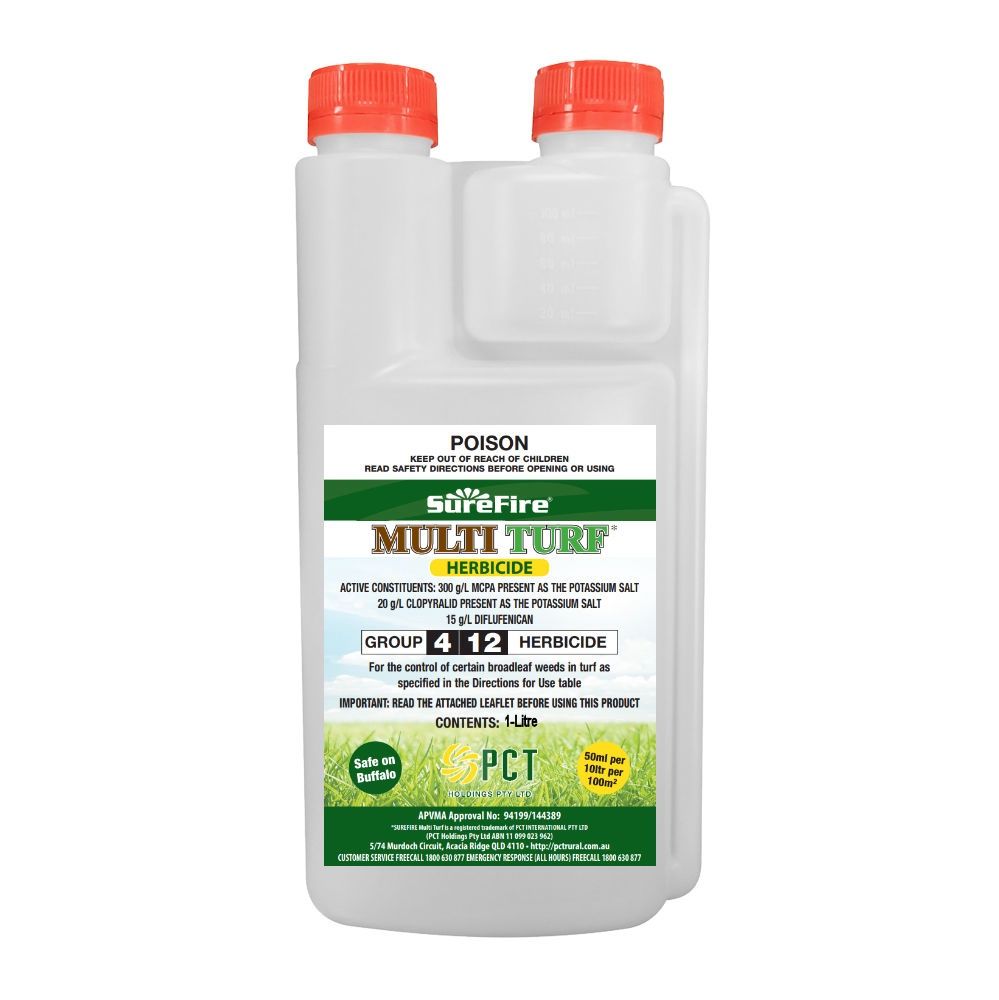MULTI TURF HERBICIDE 1L (BOW & ARROW EQUIVALENT)
Surefire Multi Turf Herbicide
Active Ingredients: Diflufenican @ 15g/L, MCPA @ 300g/L and Clopyralid at 20g/L
Similar or comparable to Bow and Arrow Herbicide (Turf Culture), Jolt Selective Herbicide (Amgrow) and Stadium Turf Selective Herbicide (Adama)
Surefire Multi Turf Herbicide delivers exceptional broadleaf weed control in turf through its powerful combination of three active ingredients – Diflufenican, MCPA, and Clopyralid. This strategic formulation utilises two distinct modes of action (Groups 4 and 12), working synergistically to achieve superior results at lower application rates than individual treatments.
Surefire Multi Turf Herbicide is specifically designed to target broadleaf weeds while maintaining turf safety, this versatile herbicide is compatible with both warm and cool-season grasses and can be applied throughout the year, offering turf managers outstanding flexibility in their weed management programs.
What weeds does Surefire Multi Turf Herbicide control?
Broadleaf weeds, including;
White Clover (Trifoliumrepens)
Plantain (Plantago lanceolata)
Capeweed (Arctotheca calendula)
Cat’s Ear (Hypochaeris radicata)
Bin-dii (bindii, bindi, bindyi or bindi-eye) (Jo-Jo, Onehunga) (Soliva sessilis)
Cudweed (Gnaphalium spp.)
Creeping Oxalis (Oxalis corniculata)
Where can Surefire Multi Turf Herbicide be used;
Surefire Multi Turf Herbicide can be used on most turf varieties, including Buffalo*.
Transient discolouration may occur on Kikuyu, Carpet grass and Queensland Blue Couch.
*Varietal differences in certain Buffalo grasses (e.g. ST85) may produce more pronounced effects, and therefore, it is recommended that small areas be tested for turf safety before large-scale application occurs.
It should not be used on bentgrass or winter grass golf and bowling greens.
How do you get the best results from Surefire Multi Turf Herbicide;
Avoid exceeding application rates through overlapping sprayed areas.
Use a surfactant for difficult-to-wet weeds.
For best results, the turf and weeds should be actively growing at the time of treatment.
Complete weed death may take up to 6 weeks.
Faster results can be expected on smaller weeds.
Due to residual effects on diflufenican, overseeding treated areas within 3 months of application may inhibit the establishment of the turf grass.

